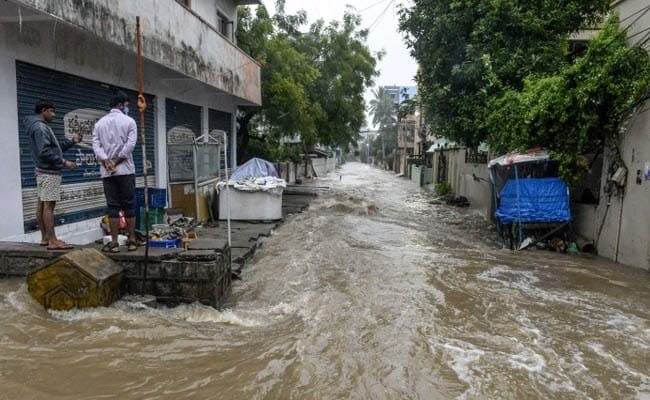
Hyderabad, October 2020
(Potsdam Institute for Climate Impact Research, April 14, 2021) If global warming continues unchecked, summer monsoon rainfall in India will become stronger and more erratic. This is the central finding of an analysis by a team of German researchers that compared more than 30 state-of-the-art climate models from all around the world. The study predicts more extremely wet years in the future – with potentially grave consequences for more than one billion people’s well-being, economy, food systems and agriculture.
“We have found robust evidence for an exponential dependence: For every degree Celsius of warming, monsoon rainfalls will likely increase by about 5%,” says lead author Anja Katzenberger from the Potsdam Institute for Climate Impact Research (PIK) and Ludwig-Maximilian University in Munich, Germany (LMU). “Hereby we were also able to confirm previous studies but find that global warming is increasing monsoon rainfall in India even more than previously thought. It is dominating monsoon dynamics in the 21st century.”
Too much rainfall can harm plants
More rainfall is not necessarily a good thing for the farming sector in India and its neighboring countries. As co-author Julia Pongratz from LMU explains: “Crops need water especially in the initial growing period, but too much rainfall during other growing states can harm plants – including rice on which the majority of India’s population is depending for sustenance. This makes the Indian economy and food system highly sensitive to volatile monsoon patterns.”
A look into the past underlines that human behavior is behind the intensification of rainfall. Starting in the 1950s, human-made forcings have begun to overtake slow natural changes occurring over many millennia. At first, high sun-light blocking aerosol loadings led to subdued warming and thus a decline in rainfall, but since then, from 1980 onwards, greenhouse gas-induced warming has become the deciding driver for stronger and more erratic Monsoon seasons.
A threat to the Indian subcontinent
“We see more and more that climate change is about unpredictable weather extremes and their serious consequences,” comments group leader and co-author Anders Levermann from PIK and Columbia University, New York/USA on the findings of the study published in the journal Earth System Dynamics. “Because what is really on the line is the socio-economic well-being of the Indian subcontinent. A more chaotic monsoon season poses a threat to the agriculture and economy in the region and should be a wakeup call for policy makers to drastically cut greenhouse gas emissions worldwide.”
| Abstract of Anja Katzenberger, Jacob Schewe, Julia Pongratz, and Anders Levermann, Robust increase of Indian monsoon rainfall and its variability under future warming in CMIP6 models, Earth System Dynamics, Volume 12, issue 2, April 2021
The Indian summer monsoon is an integral part of the global climate system. As its seasonal rainfall plays a crucial role in India’s agriculture and shapes many other aspects of life, it affects the livelihood of a fifth of the world’s population. It is therefore highly relevant to assess its change under potential future climate change. Global climate models within the Coupled Model Intercomparison Project Phase 5 (CMIP5) indicated a consistent increase in monsoon rainfall and its variability under global warming. Since the range of the results of CMIP5 was still large and the confidence in the models was limited due to partly poor representation of observed rainfall, the updates within the latest generation of climate models in CMIP6 are of interest. Here, we analyze 32 models of the latest CMIP6 exercise with regard to their annual mean monsoon rainfall and its variability. All of these models show a substantial increase in June-to-September (JJAS) mean rainfall under unabated climate change (SSP5-8.5) and most do also for the other three Shared Socioeconomic Pathways analyzed (SSP1-2.6, SSP2-4.5, SSP3-7.0). Moreover, the simulation ensemble indicates a linear dependence of rainfall on global mean temperature with a high agreement between the models independent of the SSP if global warming is the dominant forcing of the monsoon dynamics as it is in the 21st century; the multi-model mean for JJAS projects an increase of 0.33 mm d−1 and 5.3 % per kelvin of global warming. This is significantly higher than in the CMIP5 projections. Most models project that the increase will contribute to the precipitation especially in the Himalaya region and to the northeast of the Bay of Bengal, as well as the west coast of India. Interannual variability is found to be increasing in the higher-warming scenarios by almost all models. The CMIP6 simulations largely confirm the findings from CMIP5 models, but show an increased robustness across models with reduced uncertainties and updated magnitudes towards a stronger increase in monsoon rainfall. |


